Candi Pawon One More Step Closer to Nirvana
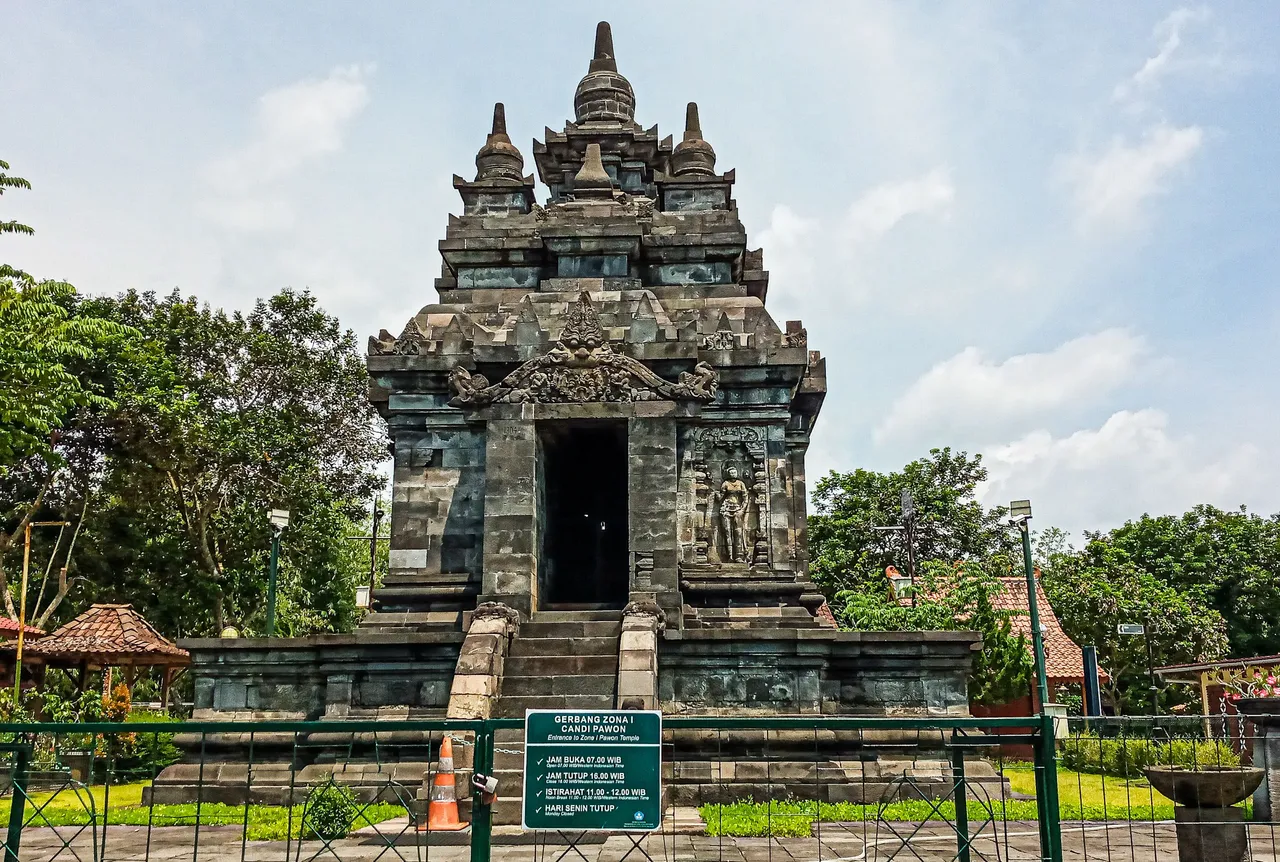

In order to complete this timeless temple journey, the final temple that I will be showing you is a place called Candi Pawon. It is argued that this temple could be even older than Borobudur and mendut. If we draw the straight line, this temple is located in the middle between the magnificent borobudur and the mendut. These triad temples are argued to be connected in some sort of a religious ritual in Buddhism to reach Nirvana or perfection. Supporting this argument, some archeologists consider Candi Pawon as the gate to the Borobudur Temple. It serves as a place for people to cleanse their bodies and minds from defilements before entering the sacred and majestic Borobudur. This is reflected in the modern day during Vesak, where Buddhist in Indonesia walk from Mendut passing through Pawon and end at Borobudur.
Candi Pawon was built around the same time as the other two temples, somewhere around 7 to 9th century. But the effort to preserve this temple began in 1903. Today, this sacred temple is located in the middle of local houses that are turned into souvenir shops and even tourist service providers.

Why is it called Candi Pawon?
The naming itself is something unique. When it is literally translated to English, Pawon means Kitchen. Yet, this is considered as the gate to Borobudur, so how does that make sense? I have yet to find a literature that describes its actual connection. Thus far, all I found is that According to an epigraph Casparis, this was meant as “ash” since Awo- Awu in javanese means “Ash” and he regarded this place as the place to store ash and the mortuary of a king. Perhaps, this is a question that I need to find more later.

The Architecture
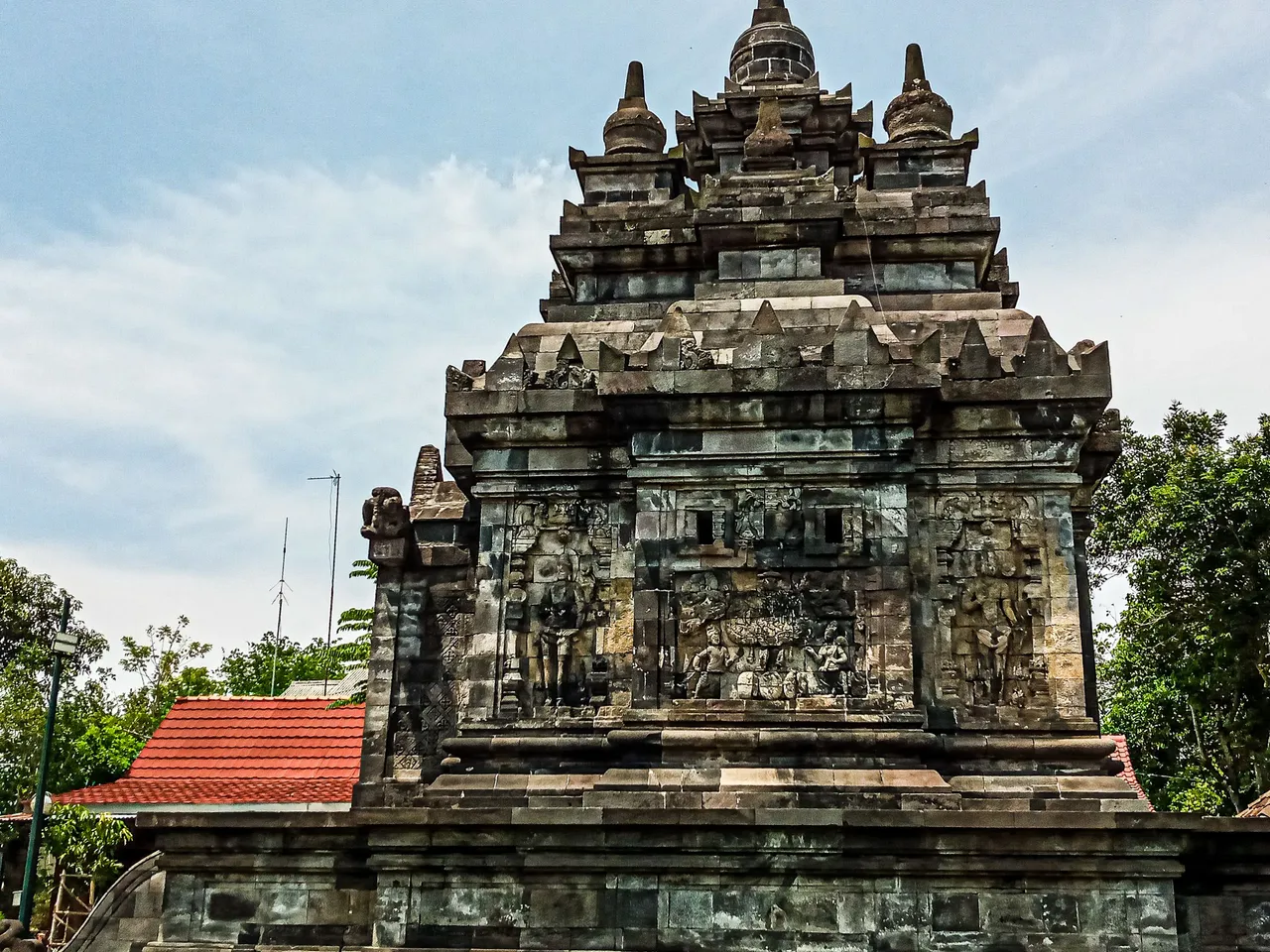
As the other two temples in the area, the material of this temple is andesite stone. The building faces the west with a slightly thinner shape than Borobudur. Personally, I think it is interesting because the other two temples are wider in shape yet this one is thinner, almost looking like typical Hindu temples. However, the stupas surrounding it are a marker that indicates Candi Pawon is a Buddhist temple. L.J.Moens in his paper titled Barabudur, Mendut, and Pawon and their mutual relationshiplies out a better and more descriptive architectural structure of Pawon and the other two temples.
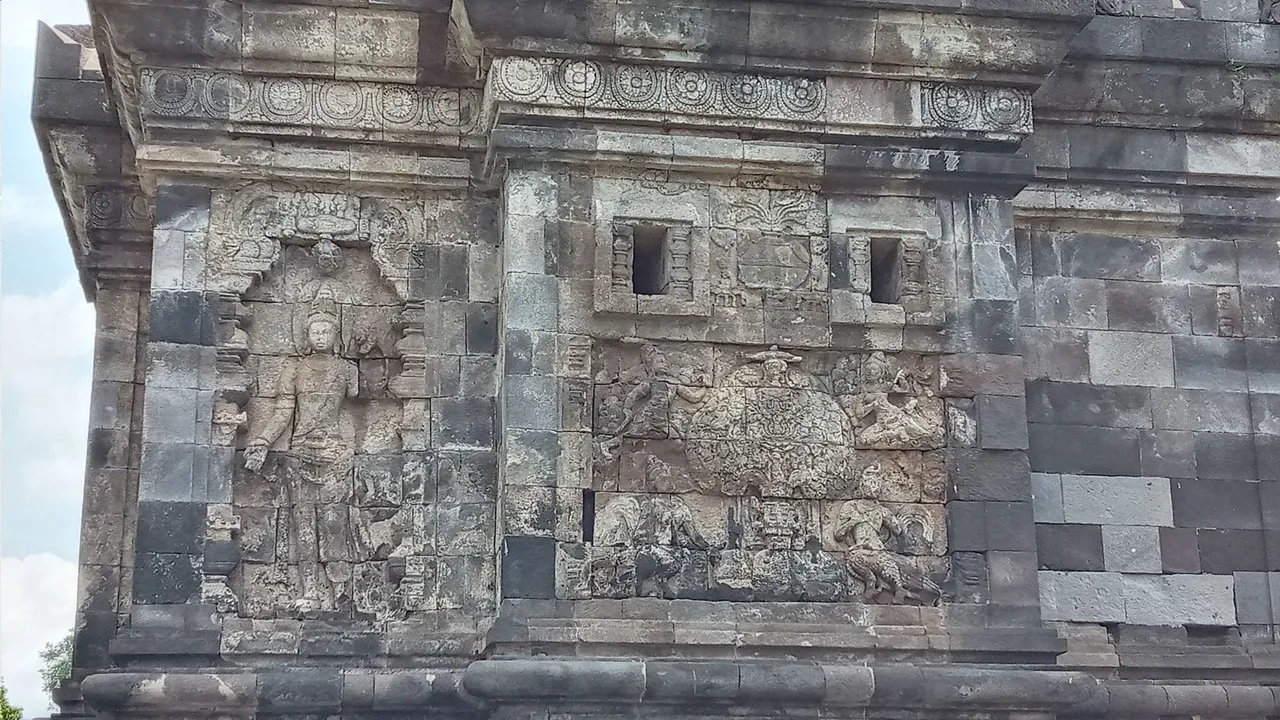
Reliefs of Kinnar and Kinnari in the middle and Bodhisattva on the left
Personally, its charm still lies on the reliefs of this temple that shows Kinnara and Kinnari, celestial musician, part human and part bird, and carved with Bodhisattva, any person who is on the path towards Buddhahood. These reliefs seem to be the clue to uncover the function of these temples in the past.
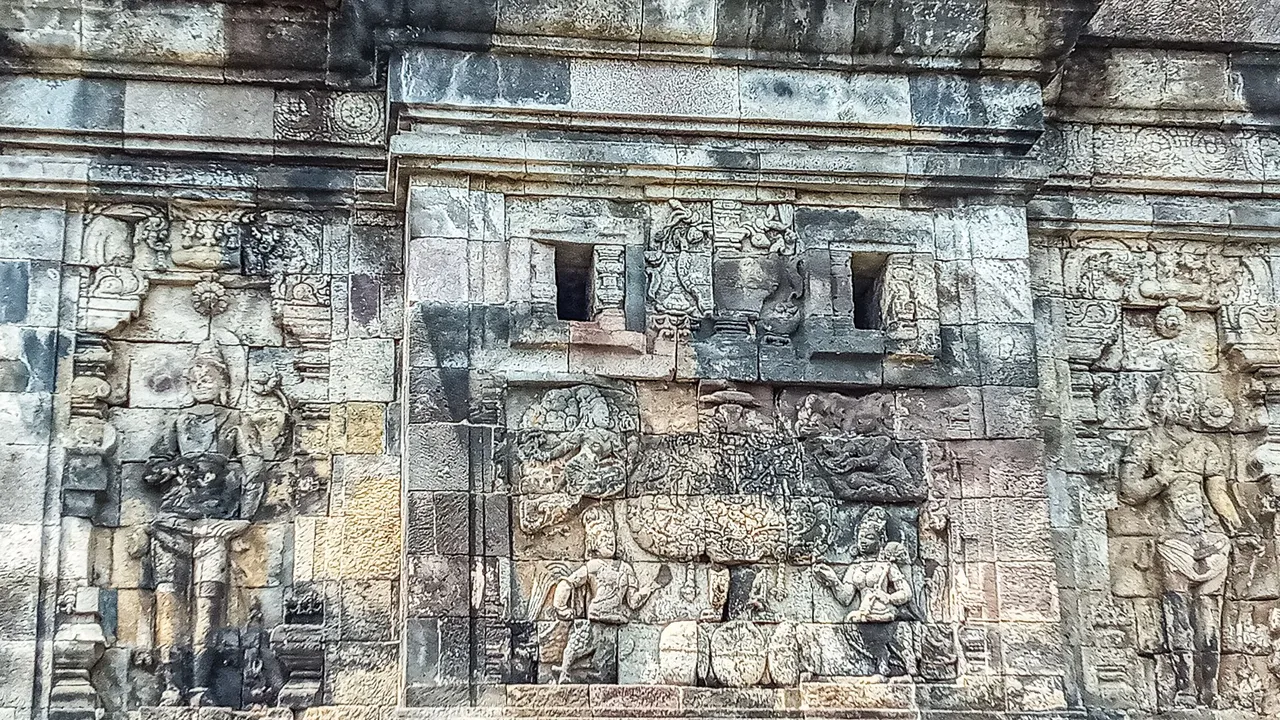
More Reliefs of Kinnar and Kinnari in the middle and Bodhisattva on the left and right
Unfortunately, I can’t go inside of it and it also said that there’s no statue inside of it. So, all I did was circling around the place and took pictures of the reliefs and its surrounding. From my observation, some of the original stones were missing and were replaced with regular stones that made part of the relief gone.


Candi Pawon is something that is also underrated for many. This is often forgotten because there’s only this small temple in the middle of local’s houses. Unless you are interested in historical architecture or are on a journey into Buddhahood, this temple won’t really interest you to visit it. This evidence is quite clear based on the google reviews of this temple that quite infuriates me. Including one that mentions “ nice temple but very small”, “ you could only take pictures here”, “not so special”, “ just a couple of pictures”. Sometimes I think that despite years of education, some people fail to spark their curiosity about any historical places. If they do, some of the things I mention above could be something interesting to learn or find out.
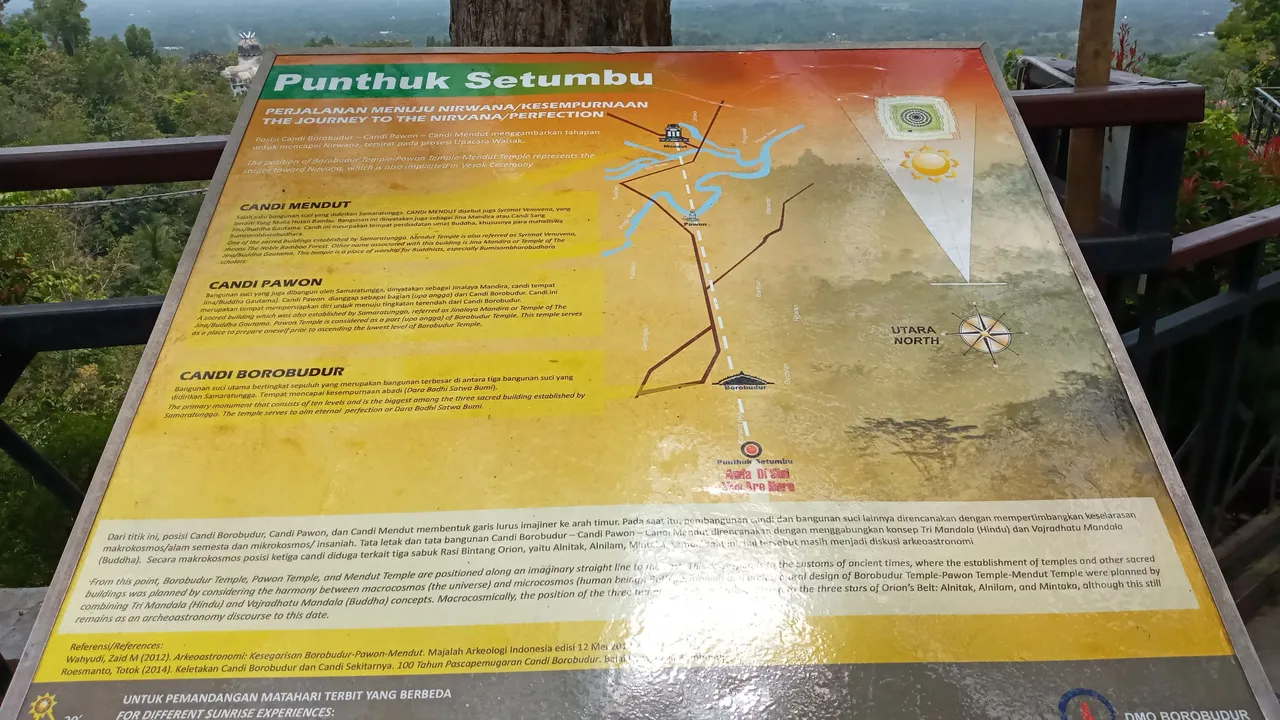
And before visiting this temple, we hiked to Punthuk Setumbu where I discovered and learned about the title of this post, The Pathway to Nirvana in which from this hill, there is an imaginary straight line where these sacred temples were allegedly planned. These buildings are said to be built following the concept of harmony between the universe. And though it is still up to debate, there is a theory that said these temples' positions are related to the Orion's belt as written on the board information that I found during my hike to punthuk setumbu. We ended this journey with Ray and I visited Mendut once more to bid goodbye to this area.
Now, I learned that the arrangement of my post should be mendhut, pawon, and borobudur as it seems to be how they are related. That is also, another new thing I learned from this journey visiting these temples. In the future, I really wish to see more of similar intricate details that also have its connection to the ancient Javanese kingdom. To end this journey, I wish you could visit all the places that I mentioned in my timeless architecture series.
To summarize the journey and to give you a picture of where to visit to maximize the archeological/history/architecture journey . Do it something like this :
- Sunrise Punthuk Setumbu, where it all begins.
- Mendut temple
- Pawon temple, one step closer to Nirvana.
- Borobudur Temple, The final destination.
I know that this series has to end but stay tuned for my journey uncovering the timeless architecture of Hinduism in Indonesia where I am planning to visit some Hindu temples around where I live and tell you a bit of its difference in structure, location, its function and its philosophy.

If you want to check out another stories of this journey, check out these timeless architecture stories below:
Many would miss out and even ignore the existence of this small buddhist temple called Mendut that was built around 8 to 9th century. But, they are missing out on a piece of interesting historical building and also cheap fresh coconut in front of the temple.
Surrounded by Menoreh Hills, lies a majestic religious building that also serves as a canvas to retell the glory of ancient Javanese civilization during the 8th to 9th century. Built thoughtfully carrying buddhist symbolism, Borobudur temple also represents many layers of buddhist theory.
If you draw a line between this hill and the temple, this spot is where you can draw a straight line between the three temples (borobudur, mendut,and pawon ) that is considered as a pathway to nirvana.

 | Mac is a jack of all trades. A typical introvert in love with literature, books, technology and philosophy. She is also so into nootropics, productivity, minimalist lifestyle, cybersecurity, and languages. Other than that, she is passionate about cooking and traveling. In her free time, she enjoys learning various things. If you like her content, don't hesitate to upvote, leave a comment or a feedback. A re-blog is also appreciated. |
